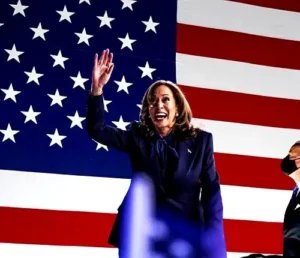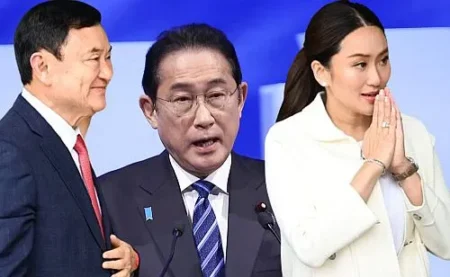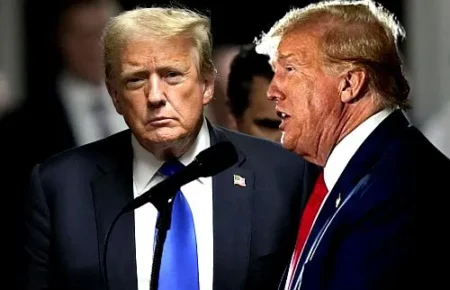Democrats Surge to Convention Ratings Win Over Republicans
The recent Democratic National Convention (DNC) has proven to be a resounding success, showcasing a re-energised Democratic Party that has managed to convert enthusiasm and support into impressive television ratings. Each night of the DNC attracted more viewers than the corresponding night of the Republican National Convention (RNC), reflecting a significant shift in public interest and engagement.
Breaking Down the Numbers
According to Nielsen ratings, the numbers tell a compelling story. The DNC averaged an impressive 21.8 million viewers across its four nights, surpassing the RNC’s average viewership of just 18.7 million. This increase in viewership underscores the excitement surrounding the Democratic Party’s current momentum.
Key Highlights from the DNC and RNC
- Kamala Harris vs. Donald Trump: Kamala Harris’s speech attracted 28.9 million viewers, slightly edging out Donald Trump’s 28.4 million. While the difference may seem marginal, it is noteworthy given Trump’s well-known obsession with ratings.
- Comparative Ratings: Although this year’s ratings exceeded those of the 2020 DNC and RNC, they still fell short of the 2016 numbers.
- Changing Viewing Habits: It’s essential to consider that Nielsen does not account for streaming platforms, YouTube, Twitch, or social media, meaning the actual number of viewers could be significantly higher.
Contextual Factors Influencing the Ratings
The conventions took place during a politically charged atmosphere. Notably, when Trump addressed the audience, it followed closely after an assassination attempt on his life, marking a dramatic moment in his political journey. This context undoubtedly influenced viewer interest and engagement.
Moreover, the Democratic Party capitalised on this energy, presenting a line-up of high-profile speakers. The presence of former Presidents Bill and Hillary Clinton, Barack and Michelle Obama, and celebrities like Oprah Winfrey, alongside performances from artists like Stevie Wonder and John Legend, added significant star power to the DNC.
Celebrity Buzz and Anticipation
Among the most talked-about moments leading up to the DNC was the speculation around the potential appearance of Beyoncé. The excitement surrounding her possible attendance created a buzz that, while ultimately unfulfilled, contributed to the overall narrative of the convention. With Kamala Harris using Beyoncé’s song “Freedom” during her campaign, many expected a surprise appearance, which heightened anticipation.
The Impact of Celebrity Culture on Politics
The intersection of celebrity culture and politics cannot be overlooked. The DNC effectively harnessed this dynamic, using high-profile endorsements and appearances to galvanise support and capture viewer attention. The combination of political gravitas and entertainment has become a defining characteristic of modern political conventions.
Communication Strategies and Media Management
In the wake of the DNC, there have been discussions about the strategies employed by Kamala Harris and her team. As calls for interviews and town halls grow louder, Harris has opted to maintain a degree of distance, perhaps to build anticipation and manage expectations. The political landscape is rapidly evolving, and the pressure to engage with the media is ever-present.
Looking Ahead: The Road to 2024
As the political landscape shifts and the 2024 presidential election approaches, the Democratic Party’s ability to maintain momentum will be crucial. The DNC’s success in ratings is just one indicator of the party’s current standing, but it also highlights the importance of strategic communication, celebrity engagement, and media presence in shaping public perception.
Challenges Ahead
- Media Scrutiny: With increased visibility comes increased scrutiny. Harris’s reluctance to engage with the media could become a point of contention, particularly as the Trump campaign seeks to capitalise on any perceived weaknesses.
- Maintaining Enthusiasm: The challenge for the Democratic Party will be to sustain the enthusiasm generated during the convention and translate it into tangible support as the election approaches.
- Engagement Across Platforms: Understanding and adapting to changing viewing habits will be essential. The party must engage with audiences across various platforms, including social media, to reach a broader demographic.
Conclusion
The DNC’s ratings success marks a pivotal moment in the current political climate, showcasing the power of a united party, star-studded endorsements, and strategic media engagement. While the journey to the 2024 election is fraught with challenges, the Democratic Party’s ability to harness this momentum will be critical in the coming months.
As we look forward to the future, one thing is clear: the interplay between politics and popular culture will continue to shape the narrative. The Democrats have set a high bar with their recent convention, but the Republicans will undoubtedly be looking to regroup and strategise for their own upcoming events. The battle for viewer attention and public support is just beginning.
Stay tuned as we continue to follow the developments in this ever-evolving political landscape. With so much at stake, the coming months promise to be both exciting and unpredictable.









